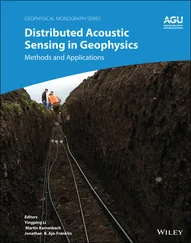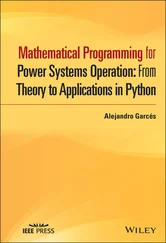Finally, the easy sharing of data, which we described above as an advantage, may turn out to be a two-edged sword. If people can conveniently access data all over the system, they may equally be able to conveniently access data that they have no business looking at. In other words, security is often a problem. For data that must be kept secret at all costs, it is often preferable to have a dedicated, isolated personal computer that has no network connections to any other machines, and is kept in a locked room with a secure safe in which all the floppy disks are stored. The disadvantages of distributed systems are summarized in Fig. 1-3.
Despite these potential problems, many people feel that the advantages outweigh the disadvantages, and it is expected that distributed systems will become increasingly important in the coming years. In fact, it is likely that within a few years, most organizations will connect most of their computers into large distributed systems to provide better, cheaper, and more convenient service for the users. An isolated computer in a medium-sized or large business or other organization will probably not even exist in ten years.
| Item |
Description |
| Software |
Little software exists at present for distributed systems |
| Networking |
The network can saturate or cause other problems |
| Security |
Easy access also applies to secret data |
Fig. 1-3.Disadvantages of distributed systems.
Even though all distributed systems consist of multiple CPUs, there are several different ways the hardware can be organized, especially in terms of how they are interconnected and how they communicate. In this section we will take a brief look at distributed system hardware, in particular, how the machines are connected together. In the next section we will examine some of the software issues related to distributed systems.
Various classification schemes for multiple CPU computer systems have been proposed over the years, but none of them have really caught on and been widely adopted. Probably the most frequently cited taxonomy is Flynn's (1972), although it is fairly rudimentary. Flynn picked two characteristics that he considered essential: the number of instruction streams and the number of data streams. A computer with a single instruction stream and a single data stream is called SISD. All traditional uniprocessor computers (i.e., those having only one CPU) fall in this category, from personal computers to large mainframes.
The next category is SIMD, single instruction stream, multiple data stream. This type refers to array processors with one instruction unit that fetches an instruction, and then commands many data units to carry it out in parallel, each with its own data. These machines are useful for computations that repeat the same calculation on many sets of data, for example, adding up all the elements of 64 independent vectors. Some supercomputers are SIMD.
The next category is MISD, multiple instruction stream, single data stream. No known computers fit this model. Finally, comes MIMD, which essentially means a group of independent computers, each with its own program counter, program, and data. All distributed systems are MIMD, so this classification system is not tremendously useful for our purposes.
Although Flynn stopped here, we will go further. In Fig. 1-4, we divide all MIMD computers into two groups: those that have shared memory, usually called multiprocessors,and those that do not, sometimes called multicomputers. The essential difference is this: in a multiprocessor, there is a single virtual address space that is shared by all CPUs. If any CPU writes, for example, the value 44 to address 1000, any other CPU subsequently reading from its address 1000 will get the value 44. All the machines share the same memory.
Fig. 1-4.A taxonomy of parallel and distributed computer systems.
In contrast, in a multicomputer, every machine has its own private memory. If one CPU writes the value 44 to address 1000, when another CPU reads address 1000 it will get whatever value was there before. The write of 44 does not affect its memory at all. A common example of a multicomputer is a collection of personal computers connected by a network.
Each of these categories can be further divided based on the architecture of the interconnection network. In Fig. 1-4 we describe these two categories as busand switched.By bus we mean that there is a single network, backplane, bus, cable, or other medium that connects all the machines. Cable television uses a scheme like this: the cable company runs a wire down the street, and all the subscribers have taps running to it from their television sets.
Switched systems do not have a single backbone like cable television. Instead, there are individual wires from machine to machine, with many different wiring patterns in use. Messages move along the wires, with an explicit switching decision made at each step to route the message along one of the outgoing wires. The worldwide public telephone system is organized in this way.
Another dimension to our taxonomy is that in some systems the machines are tightly coupledand in others they are loosely coupled.In a tightly-coupled system, the delay experienced when a message is sent from one computer to another is short, and the data rate is high; that is, the number of bits per second that can be transferred is large. In a loosely-coupled system, the opposite is true: the intermachine message delay is large and the data rate is low. For example, two CPU chips on the same printed circuit board and connected by wires etched onto the board are likely to be tightly coupled, whereas two computers connected by a 2400 bit/sec modem over the telephone system are certain to be loosely coupled.
Tightly-coupled systems tend to be used more as parallel systems (working on a single problem) and loosely-coupled ones tend to be used as distributed systems (working on many unrelated problems), although this is not always true. One famous counterexample is a project in which hundreds of computers all over the world worked together trying to factor a huge number (about 100 digits). Each computer was assigned a different range of divisors to try, and they all worked on the problem in their spare time, reporting the results back by electronic mail when they finished.
On the whole, multiprocessors tend to be more tightly coupled than multi-computers, because they can exchange data at memory speeds, but some fiberoptic based multicomputers can also work at memory speeds. Despite the vagueness of the terms "tightly coupled" and "loosely coupled," they are useful concepts, just as saying "Jack is fat and Jill is thin" conveys information about girth even though one can get into a fair amount of discussion about the concepts of "fatness" and "thinness."
In the following four sections, we will look at the four categories of Fig. 1-4 in more detail, namely bus multiprocessors, switched multiprocessors, bus multicomputers, and switched multicomputers. Although these topics are not directly related to our main concern, distributed operating systems, they will shed some light on the subject because as we shall see, different categories of machines use different kinds of operating systems.
1.3.1. Bus-Based Multiprocessors
Bus-based multiprocessors consist of some number of CPUs all connected to a common bus, along with a memory module. A simple configuration is to have a high-speed backplane or motherboard into which CPU and memory cards can be inserted. A typical bus has 32 or 64 address lines, 32 or 64 data lines, and perhaps 32 or more control lines, all of which operate in parallel. To read a word of memory, a CPU puts the address of the word it wants on the bus address lines, then puts a signal on the appropriate control lines to indicate that it wants to read. The memory responds by putting the value of the word on the data lines to allow the requesting CPU to read it in. Writes work in a similar way.
Читать дальше












